- Blog
- The Sill Marketing Breakdown: How They Grew into a Leading DTC Plant Brand
The Sill Marketing Breakdown: How They Grew into a Leading DTC Plant Brand
-
Nikolett Lorincz
- Marketing Breakdowns
- 6 min read
Table of Contents
Buying plants online wasn’t always the norm, but The Sill changed that.
Founded in 2012 by Eliza Blank, this DTC plant brand turned houseplant shopping into an accessible, curated experience.
How? Through a sharp marketing strategy that blends SEO, community-building, and conversion rate optimization.
Here’s a breakdown of the key marketing moves that helped The Sill grow into a household name in the plant space.
1. Robust content and SEO strategy
The company ranks for over 84,000 keywords, thanks to a content strategy built around valuable, SEO-optimized articles.
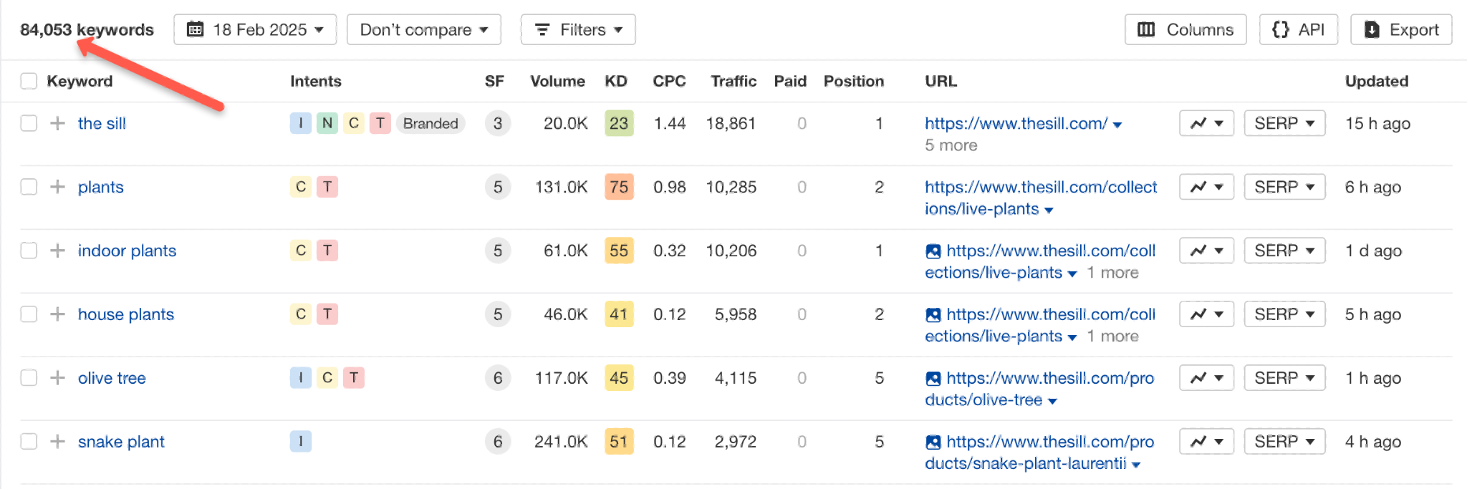
Wondering what makes their content work?
While they do compete for generic terms like “indoor plants,” they also target more specific long-tail keywords with their articles like “are coffee grounds good for plants.”

This educational top-of-funnel content attracts highly interested traffic and helps establish The Sill as an industry authority.
Their blog is packed with expert-backed plant care guides, troubleshooting tips, and how-to articles that genuinely help customers.
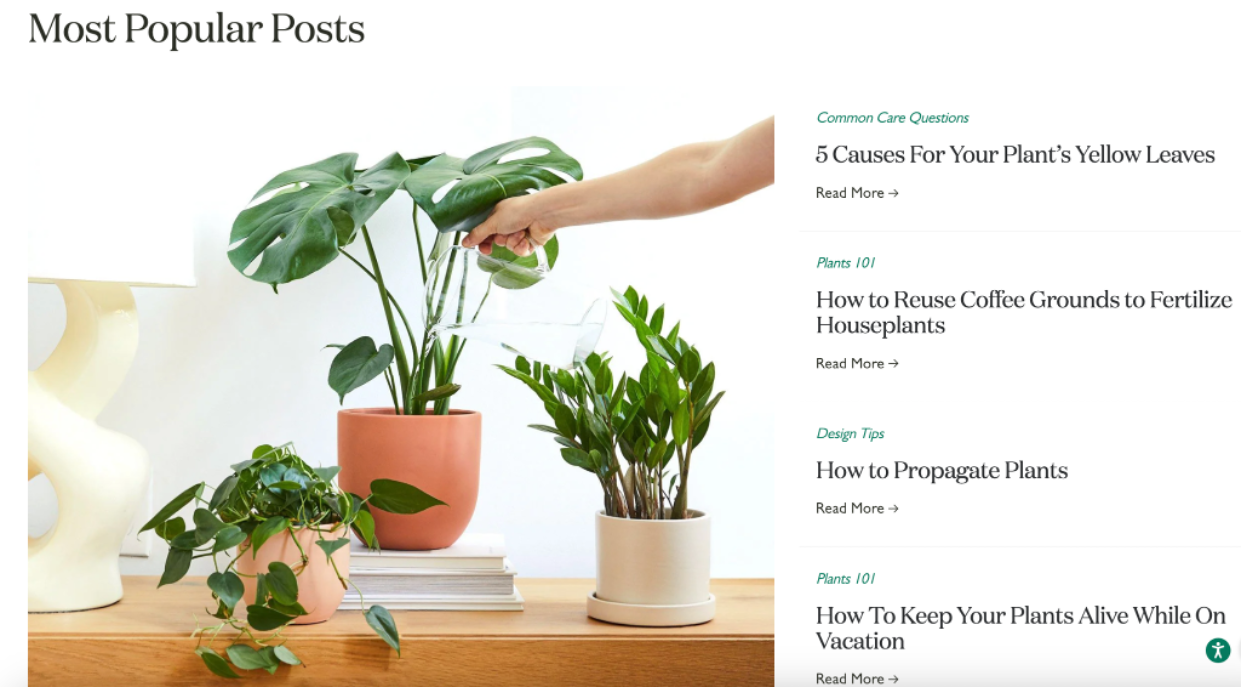
Plus, every blog post subtly promotes relevant products. For example, an article on “5 Causes for Your Plant’s Yellow Leaves” conveniently links to Plant Care Essentials, guiding readers toward a purchase.

By focusing on both search intent and user experience, The Sill turns educational content into a major revenue driver.
2. Community engagement through workshops
Plants aren’t just décor—they’re a lifestyle. The Sill understands this, and they’ve built a thriving community through in-store and online workshops.

These workshops accomplish several things:
- They provide plant care education, making customers feel more confident in their purchases.
- They reinforce The Sill’s authority in the plant space.
- They encourage repeat engagement, boosting customer lifetime value.
From beginner-friendly “Plant Parent 101” or “Gardening 101” sessions to advanced propagation classes, The Sill’s workshops do more than just teach—they cultivate a loyal customer base.
3. Thoughtful product categorization
Shopping for plants can feel overwhelming, especially for beginners. The Sill simplifies the process with intuitive product categorization, making plant selection a breeze.
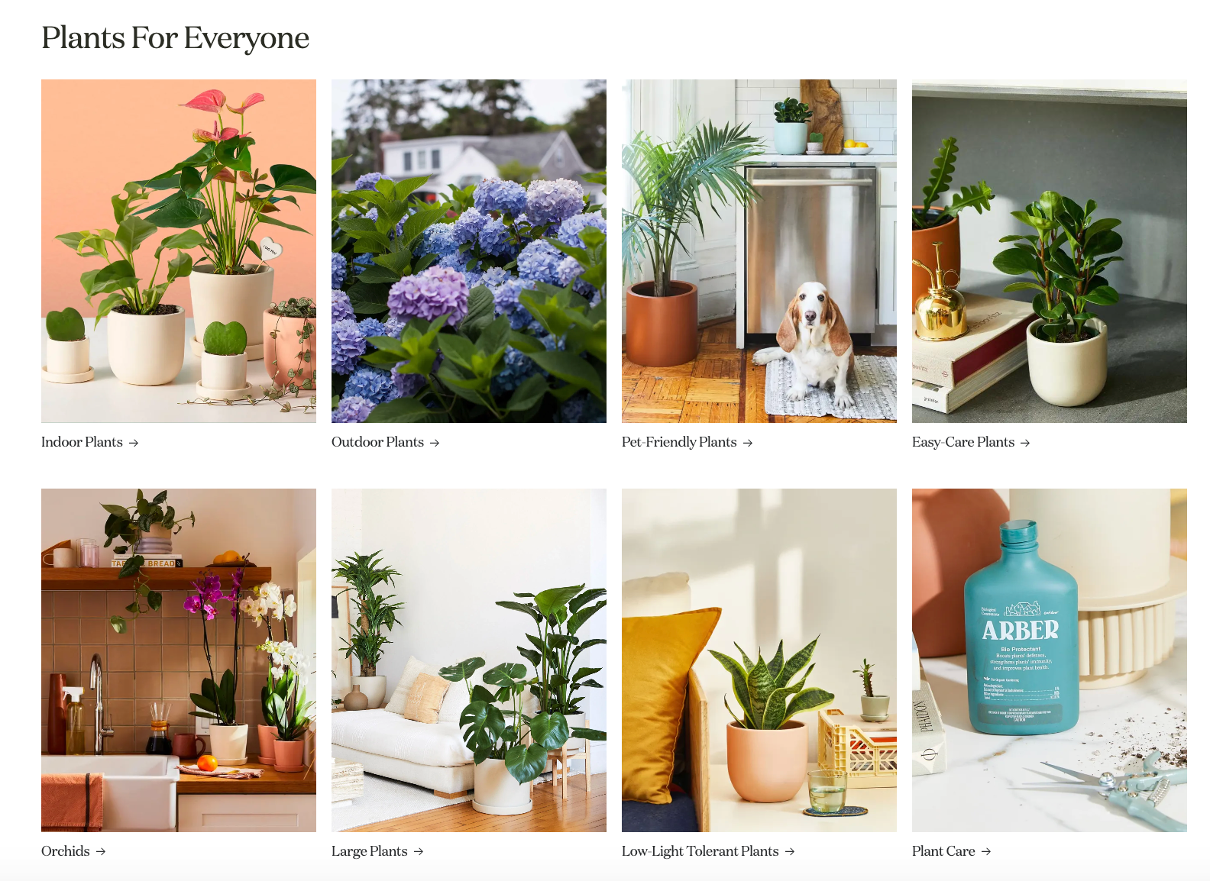
Their categories include:
- Pet-Friendly Plants: Ideal for cat and dog owners who need non-toxic options.
- Low-Light Plants: Perfect for apartments and offices with limited sunlight.
- Easy-Care Plants: For those who want greenery without the maintenance hassle.
This thoughtful approach reduces decision fatigue and enhances the shopping experience, leading to more conversions and fewer returns.
4. Strategic upselling
The Sill suggests complementary products to customers, effectively increasing the average order value.
For example, on their product pages, they use “Grows Well With” recommendations to suggest complementary items.
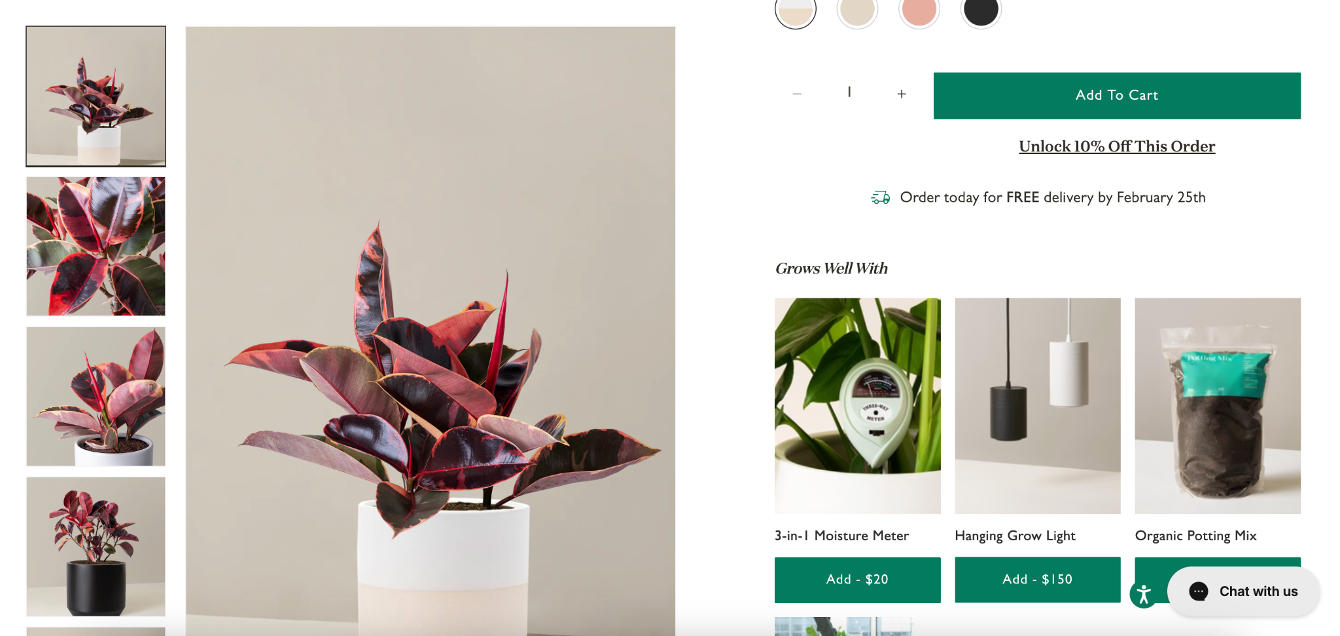
They also have “Don’t Forget These” product recommendations in the cart. This encourages last-minute add-ons before checkout.

These subtle but effective nudges encourage customers to spend more while enhancing their overall experience.
5. Website popups
The Sill uses website popups effectively to capture leads and boost conversions. Their current strategy includes a multi-step welcome popup.
This popup appears immediately after arrival, offering 10% off in exchange for visitors’ email addresses. After visitors provide their email, the second step asks for a phone number.
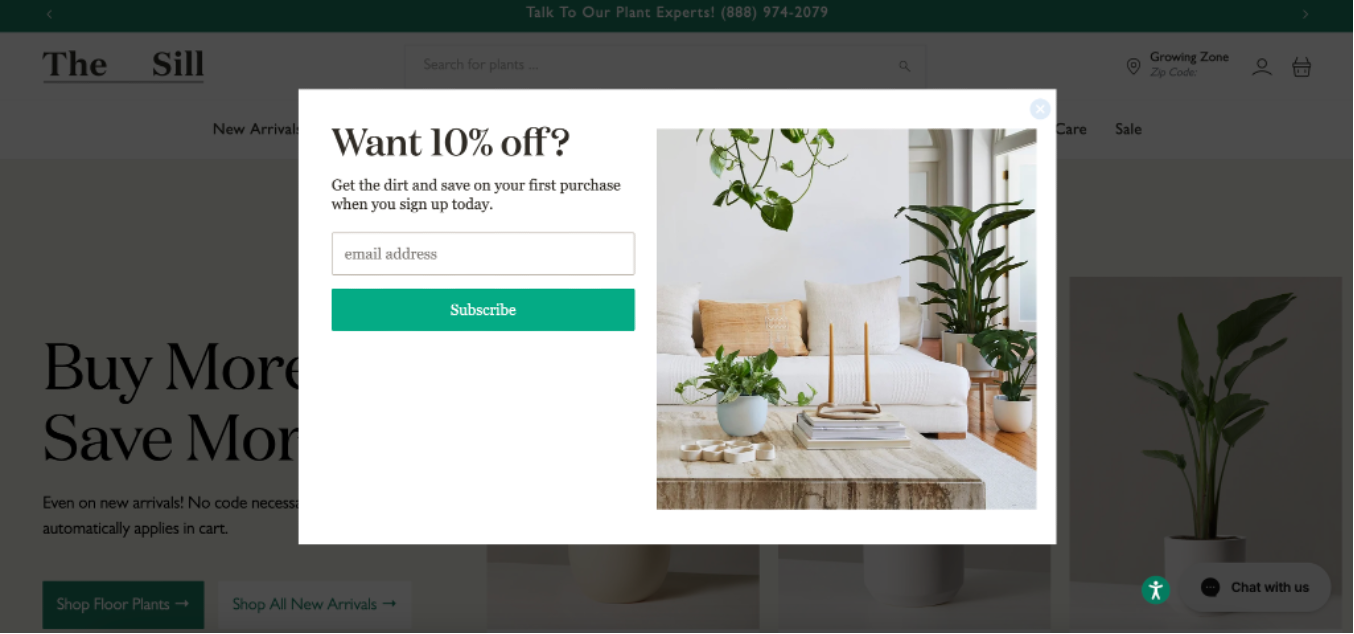
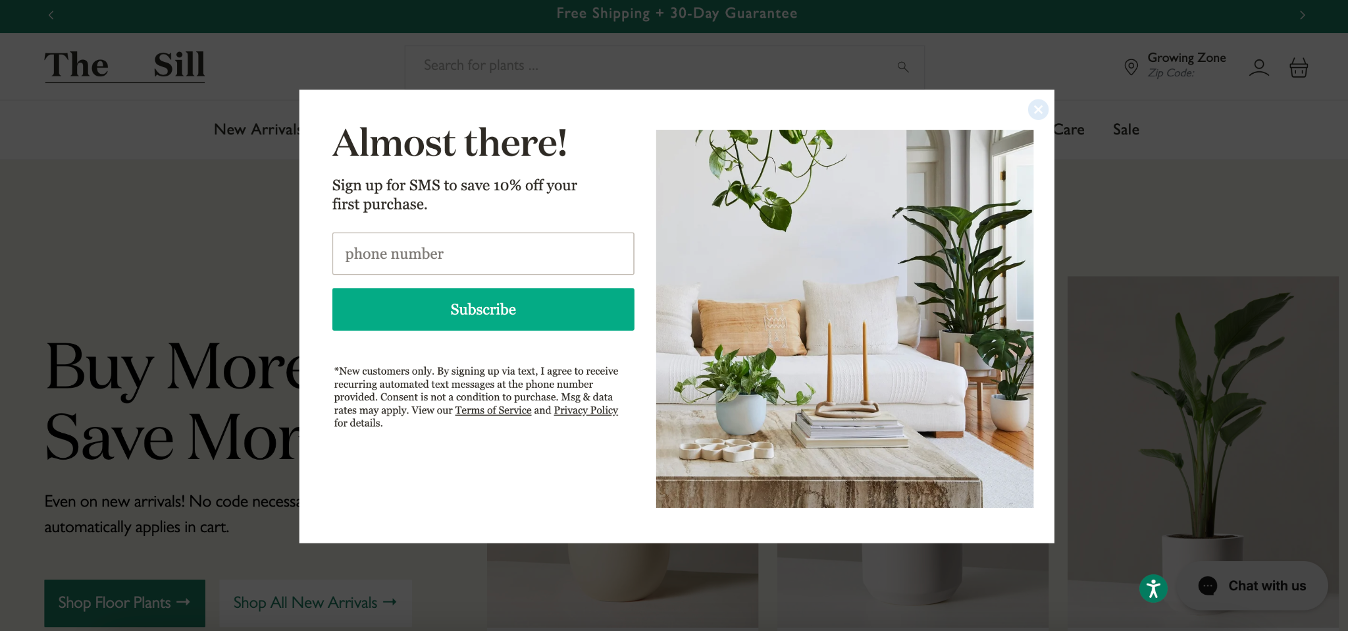
The multi-step popup strategy works well. However, it would be even more effective if they offered an extra incentive in the second step or a message like “We’ll send the deal to your phone for easy access.”
Another area for improvement?
A more visually appealing design might convert better. Take a look at our ready-to-use templates:
They also use a seasonal promo popup: “Spring Into Savings!” This popup features a tiered sale with a countdown timer, creating urgency.
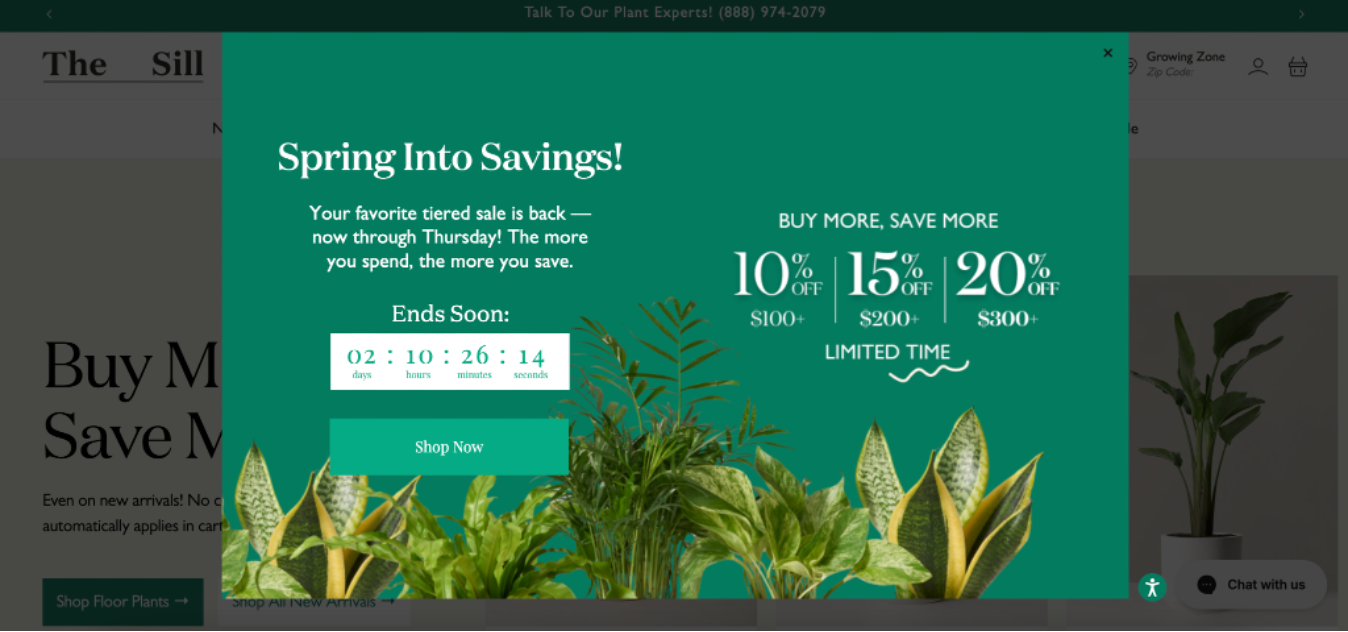
While using these kinds of popups is an excellent strategy, having two popups appear back-to-back may annoy users and drive them away. For a better experience, try segmenting your visitors. We also recommend using OptiMonk and its User Experience Protector to reduce disruption.
They also use a teaser and side message on category pages to promote their quiz and help visitors find the right product.
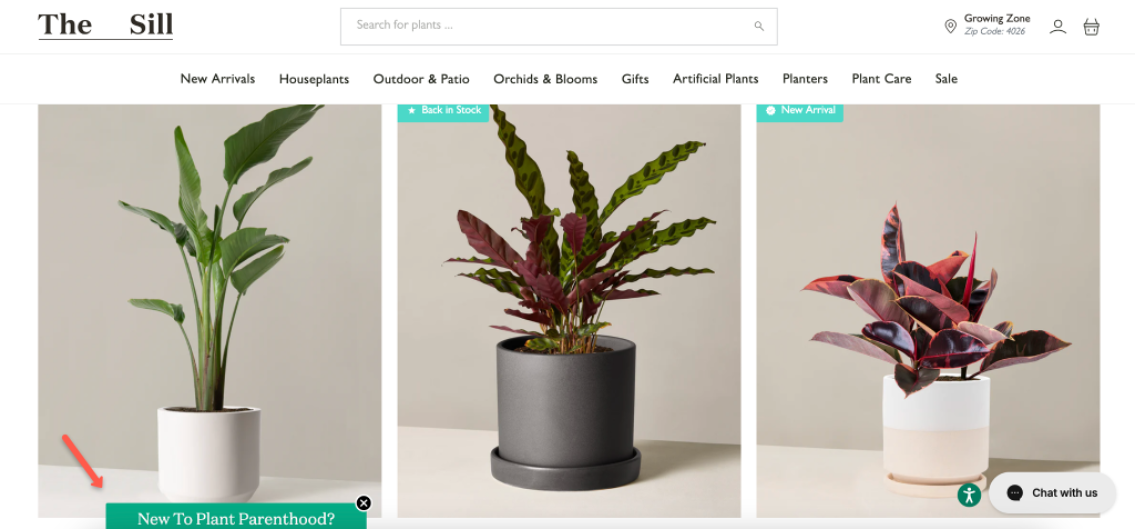
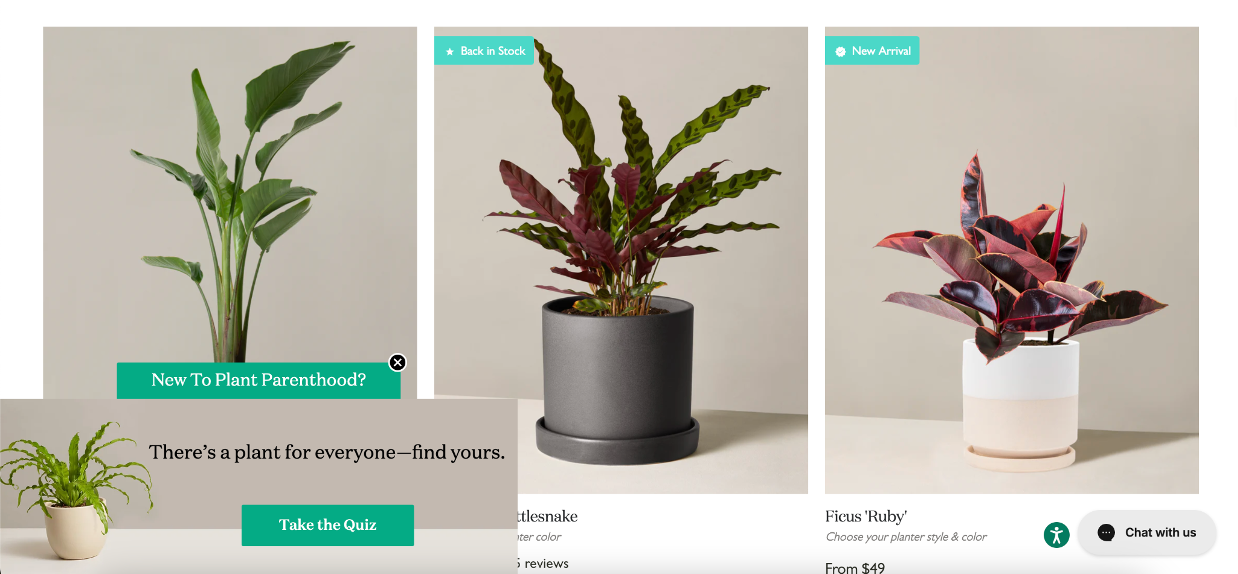
After answering a few questions in the quiz, customers are redirected to a relevant product page based on their answers—but only after providing their email.
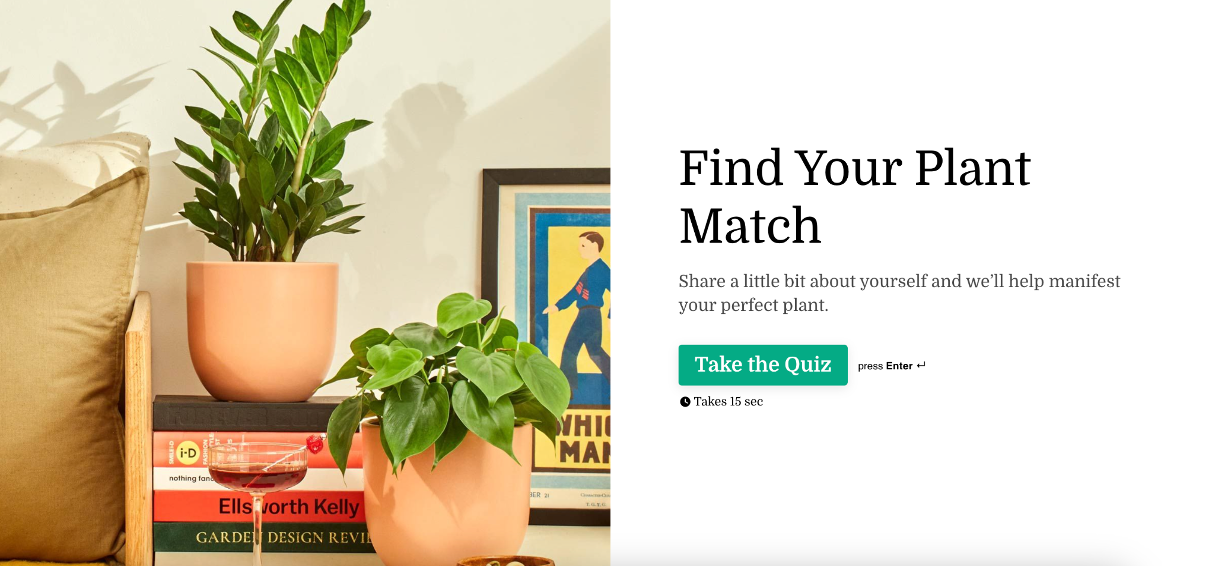
Right now, customers have to visit a separate page to complete the quiz. A popup format (see the templates below) could increase engagement.
6. Subscription services to enhance customer retention
One-time plant sales are great, but subscription services ensure long-term customer retention.
The Sill offers monthly plant subscriptions, delivering curated selections straight to customers’ doors.
Why this works:
- Encourages repeat purchases and builds habit-based buying behavior.
- Creates a predictable revenue stream.
- Strengthens brand loyalty through continuous engagement.
By making plant care effortless, The Sill keeps customers coming back month after month.
Wrapping up
🌿 Content marketing & SEO are major traffic drivers.
🌿 Community-building workshops foster customer loyalty.
🌿 Smart product categorization improves the shopping experience.
🌿 Upselling tactics boost average order value.
🌿 Website popups effectively grow their email list and drive sales.
🌿 Subscriptions encourage repeat business and predictable revenue.
By implementing these strategies, The Sill has successfully transformed plant shopping into an experience—one that keeps customers engaged, educated, and coming back for more.
Would these strategies work for your brand? If so, it’s time to take some inspiration from The Sill’s marketing playbook and start growing your own DTC success!
Learn more
Looking for more marketing breakdowns? Check out these articles:
- Sol de Janeiro Marketing Breakdown: The Secret Behind Their Explosive Growth
- Drunk Elephant Marketing Breakdown: 6 Proven Strategies You Can Implement Today
- Almave Marketing Breakdown: How They’re Winning the Non-Alcoholic Spirit Race
- Magic Spoon’s Marketing Strategy: The Secret to Disrupting the Cereal Industry
- Rhode Marketing Breakdown: How Hailey Bieber Built a Skincare Empire
- Alani Nu’s Marketing Playbook: How They Built a $3 Billion Brand
Migration has never been easier
We made switching a no-brainer with our free, white-glove onboarding service so you can get started in the blink of an eye.
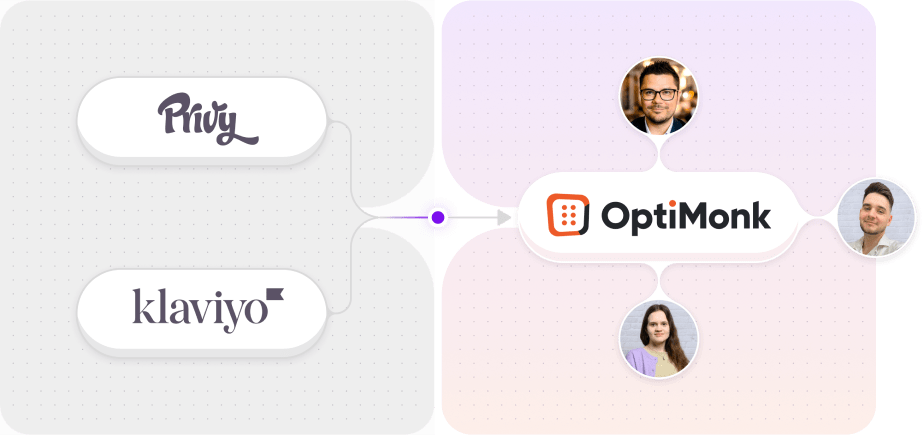
What should you do next?
Thanks for reading till the end. Here are 4 ways we can help you grow your business:
Boost conversions with proven use cases
Explore our Use Case Library, filled with actionable personalization examples and step-by-step guides to unlock your website's full potential. Check out Use Case Library
Create a free OptiMonk account
Create a free OptiMonk account and easily get started with popups and conversion rate optimization. Get OptiMonk free
Get advice from a CRO expert
Schedule a personalized discovery call with one of our experts to explore how OptiMonk can help you grow your business. Book a demo
Join our weekly newsletter
Real CRO insights & marketing tips. No fluff. Straight to your inbox. Subscribe now
Nikolett Lorincz
- Posted in
- Marketing Breakdowns
Partner with us
- © OptiMonk. All rights reserved!
- Terms of Use
- Privacy Policy
- Cookie Policy
Product updates: January Release 2025








